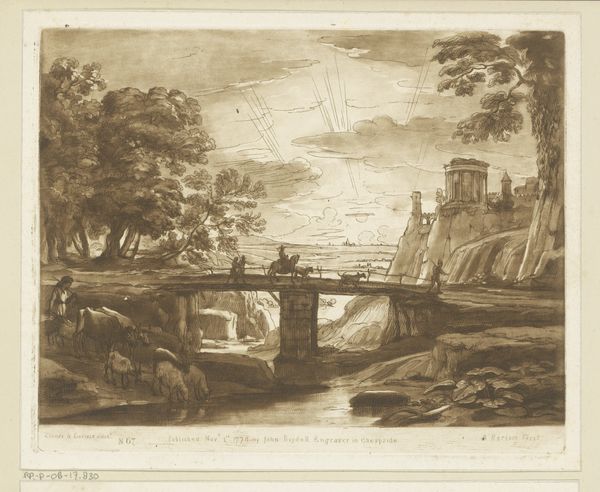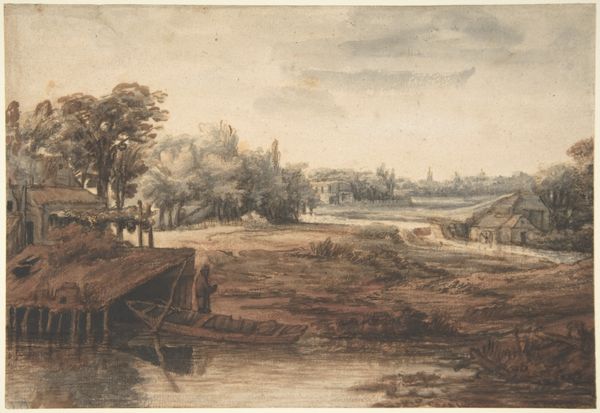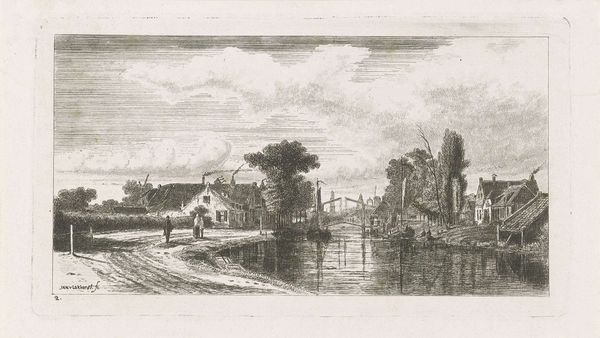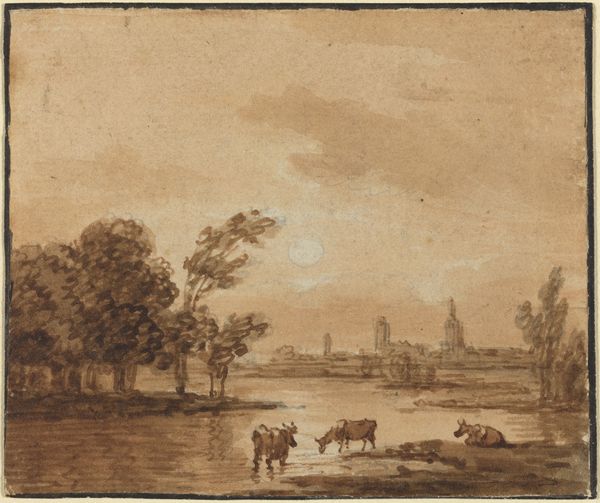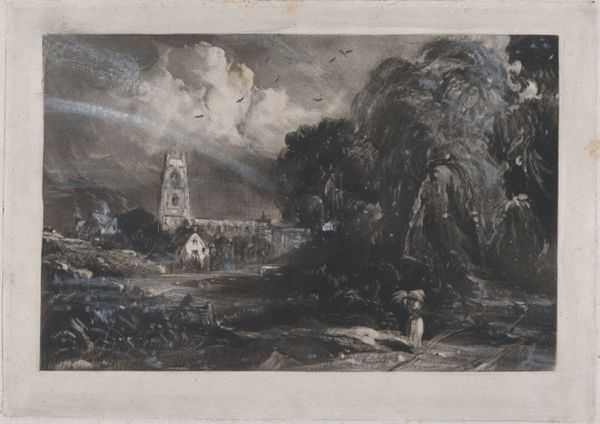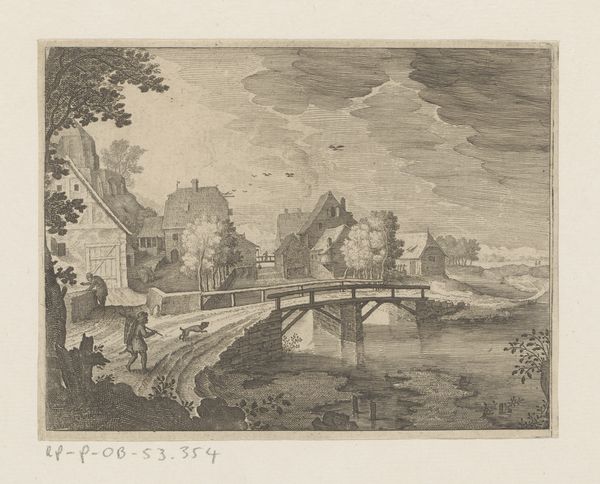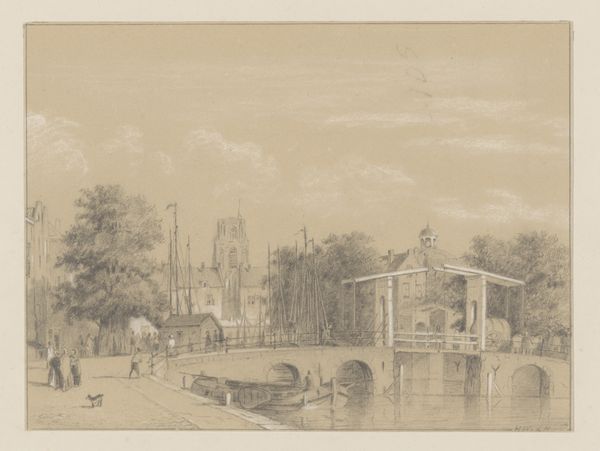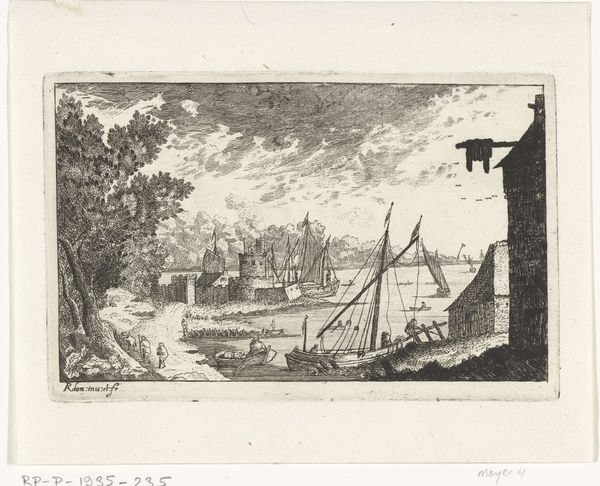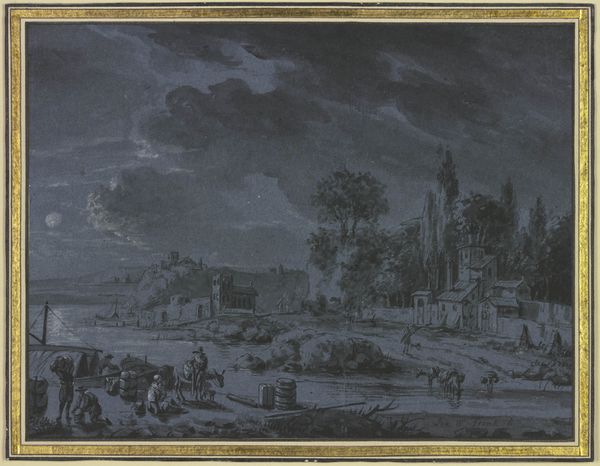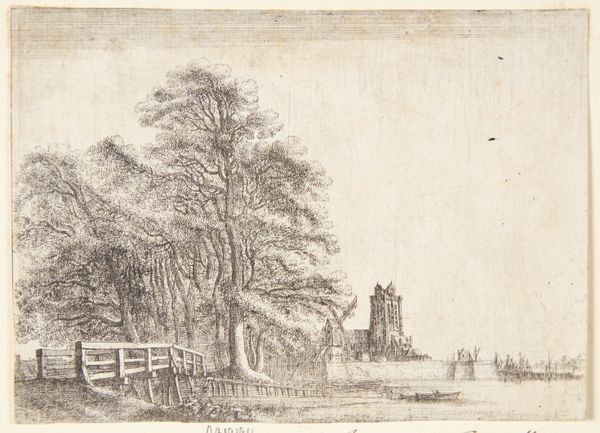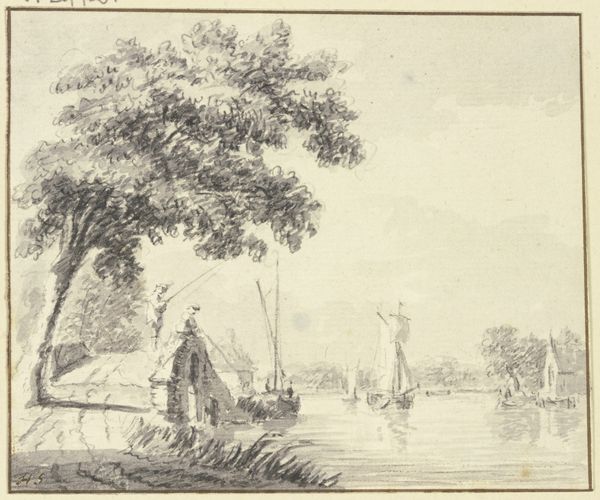
Landskab med vippebro og ruin i måneskin 1795 - 1798
0:00
0:00
drawing, watercolor, charcoal
#
drawing
#
water colours
#
landscape
#
charcoal drawing
#
oil painting
#
watercolor
#
romanticism
#
cityscape
#
charcoal
#
watercolor
Dimensions: 213 mm (height) x 342 mm (width) (monteringsmaal), 92 mm (height) x 130 mm (width) (bladmaal)
Curator: What strikes you first about this nocturnal landscape? Editor: The quietness. There's a profound sense of stillness, a melancholic contemplation perhaps. What can you tell me about it? Curator: This is "Landscape with Drawbridge and Ruin in Moonlight," a watercolor and charcoal drawing created by Caspar David Friedrich sometime between 1795 and 1798. It epitomizes the Romantic fascination with ruins and the sublime power of nature. Editor: Right. Ruins signifying the transient nature of human achievement…The moon is doing so much work here to make this seem less…desolate? Or perhaps it's emphasizing the desolation by being such a strong visual anchor. It feels quite potent for a watercolor. Curator: Yes, Friedrich masterfully uses light and shadow. Note how the moon illuminates the drawbridge, the tower ruin and the gentle ripples in the water. Each area is carefully chosen. Light traditionally represents clarity of spirit, something Friedrich repeatedly seeks. It's as though he wants us to find this transcendence even amid decay. Editor: I think so, the romantic spirit looking to the past for an identity, nationhood, memory. There's almost an idealization of decay here, but also a certain critique of progress that maybe Friedrich is implying. Is he saying something about power, and how power shifts or is even destroyed? Is this rubble also the rubble of revolution? Curator: Certainly the image reverberates with the unease following the French Revolution. The ruin, however, becomes more than a symbol of lost power; it’s a reflection of inner, spiritual life, that pursuit for understanding our souls in nature. It becomes universal in that search. The composition with the bridge bisecting the space draws us to reflect upon these themes: of transition and finding a path in the unknown. Editor: The muted palette helps, doesn't it? It speaks to how history fades, how memories can dim, but it allows the bright parts to glimmer more intensely. I do think it manages to create that connection to the infinite Friedrich was known to pursue, even across centuries. Curator: Absolutely, there are few artists so in tune with nature as the ultimate signifier. Even within desolation there’s hope for spiritual illumination. Editor: It encourages you to seek significance from all around and from the past; whether from moonlit water, decaying structures or in history itself.
Comments
No comments
Be the first to comment and join the conversation on the ultimate creative platform.

